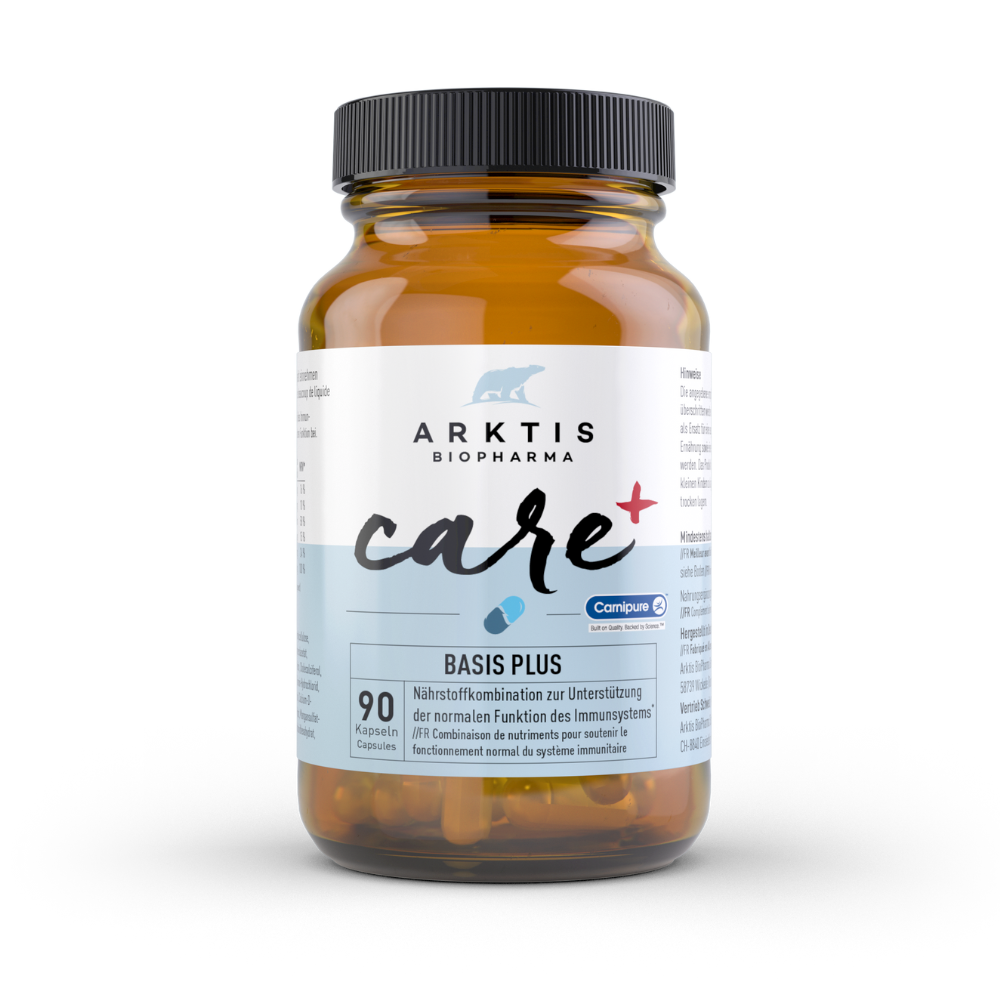Histamine intolerance - what is it?

Histamine intolerance is basically an overreaction (intolerance) of the body to the tissue hormone histamine. This occurs in people who ingest histamine through food or produce too much of it in the body but are unable to break it down sufficiently. This results in various degrees of discomfort.
When you get right down to it, the term "histamine intolerance" is not entirely correct. This is because histamine is an endogenous substance that we absolutely need. And the body cannot be intolerant to an endogenous substance. This is because when large amounts of histamine are released, a whole chain of reactions takes place. Finally, the histamine is broken down again by two enzymes. Histamine N-methyltransferase and diamine oxidase. So if we were intolerant to histamine, this would not actually be compatible with life. The correct term would therefore actually be "histaminosis", but as most people continue to refer to histamine intolerance, we have decided to stick with the rather incorrect term histamine intolerance in this article.
Histamine intolerance is usually an imbalance between histamine (initially mainly in the intestine) and the degrading enzyme diamine oxidase, or DAO for short.
More and more people are currently developing histamine intolerance. According to official figures, around 1 - 3% of people in Switzerland are affected, mainly women. There is a high number of unreported cases of people who suffer from histamine intolerance but are not diagnosed. Unfortunately, conventional medicine still often smiles at the condition, which is why we would like to raise awareness of this problem.
For all those who prefer listening to reading, I would like to recommend my popular Darmglück podcast. With lots of exciting health topics, tips and tricks for a healthy lifestyle in everyday life and a balanced diet. Listen to episode 89 Recognizing histamine intolerance and then tackling it from different angles - Interview with Nora Hodeige:
[g_podcast id="13968839"]
Causes and triggers of histamine intolerance
 Triggers of histamine intolerance include:
Triggers of histamine intolerance include:
- you ingest too much histamine through foodand your enzymes can't keep up,
- your body produces too little of the enzyme DAO,
- theoretically you have enough of the enzymes, but they are currently not able to work properly,
- you have too many bacteria in your gut that produce histamine
- Experts also discuss whether histamine intolerance and leaky gut syndrome can occur together
The enzyme that breaks down histamine in the body is diamine oxidase, or DAO for short. It is mainly produced in the small intestine, liver, kidneys and white blood cells and then released into the intestine. released. If too little DAO is produced, it is necessary to check whether the substances from which the DAO is made are sufficiently available. Because if there is too little building material, everything else comes to a standstill. Building materials for the DAO are primarily zinc and vitamin B6. If the DAO appears to be sufficiently present but its activity is restricted, the problem may lie in the intake of medication or increased alcohol consumption. Both of these inhibit DAO activity.
If histamine-forming bacteria are the main cause, the best way to get to grips with this is with a gut cleanse and a low-histamine diet. However, as the DAO is also active in the gut, it makes sense to start a gut cleanse for all other causes.
Put simply, it always comes down to the same thing: you have too much histamine and your body gets confused. The main trigger for the symptoms is thought to be too much histamine in the diet. Histamine is found in animal and plant foods, and the ripening process plays an important role: the fresher the food, the better it is generally tolerated. And even if the food is prepared by cooking and frying, histamine is not destroyed.
Symptoms of histamine intolerance
The symptoms of histamine intolerance are extremely varied, differ from person to person and depend heavily on the severity of the intolerance. This is exactly what makes it so difficult to recognize a histamine intolerance. You should look out for the following physical signs:
- Allergy symptoms such as blocked/dripping (runny nose), sneezing, breathing difficulties, asthma, itching, skin redness and rashes and swollen eyelids, hay fever
- Digestive problemssuch as abdominal pain, cramps, flatulence, diarrhea or constipation, nausea and vomiting
- Headaches, including dizziness and migraines
- Skin problems such as hives or reddening of the face
- Circulatory problemssuch as palpitations or a drop in blood pressure
- Menstrual problemsin women
Test & diagnosis
Doctors and therapists often approach the diagnosis of histamine intolerance using a process of elimination. The following options are possible:
- Test for allergies
If histamine intolerance is suspected, it is often first ruled out that other intolerances such as gluten intolerance or lactose intolerance are present and causing the symptoms. - Stool sample
If you suffer from one or more symptoms, you should have the histamine content in your stool and the presence of histamine-degrading bacteria tested, for example by your trusted therapist. - Change your diet
If the allergy and stool tests are negative, a change in diet is often recommended. For about a month, the diet is changed to a low-histamine diet. If the symptoms improve during this time, a histamine intolerance becomes increasingly likely.
[et_bloom_inline optin_id="optin_16"]
Diet for histamine intolerance
As already mentioned, histamine is produced by the body itself. The starting material for this is the essential amino acid L-histidine, which is contained in many foods. Some of these foods have However, histidine itself is already converted into histamine and thus reaches correspondingly high concentrations.
However, other biogenic amines such as serotonin and tyramine can also be problematic in the case of histamine intolerance and also lead to the corresponding symptoms.
Histamine-rich foods
This particular group of biogenic amines is mainly found in perishable animal foods, such as fish and fish products. High concentrations are also found in foods that have been biochemically and microbially altered during processing, maturing or storage. These include, for example, salami, cheese, sauerkraut and red wine.
Unfortunately, biogenic amines are heat and cold stable. This means that even if you cook or freeze them beforehand, the histamine content remains high. While fresh fish, for example, is often still well tolerated, the histamine content increases steadily with prolonged storage and freezing.
Various plant-based foods such as tomatoes, cocoa, strawberries, citrus fruits or wheat are also problematic if you suffer from histamine intolerance.
These alternatives are well tolerated
Fresh, unprocessed foods are among the foods that are well tolerated . They only contain small amounts of histamine. Unprocessed meat such as poultry or beef, fresh fish such as trout or cod and fresh dairy products such as quark or cottage cheese offer you a good selection of healthy, tasty alternatives to influence your histamine levels.
Treatment of histamine intolerance
The aim of treating histamine intolerance is to alleviate the symptoms. The therapy is usually based on two components: switching to a low-histamine dietand taking supplements.
To avoid histamine-rich foods with a high proportion of biogenic amines, you should avoid hard cheese, sausage and raw or cooked ham, enjoy foods with added microorganisms such as beer and sauerkraut with caution and avoid red wine in particular. However, tomatoes, walnuts, bananas and many other foods can also be problematic. Exact lists of how much histamine is found in which foods can be found online.
The popular intake of DAO (diamine oxidase) is actually only temporarily helpful. There are various preparations on the market that are supposed to help break down histamine for the time being until your body can cope with it on its own again and everything runs smoothly. In our experience, however, this is at best a temporary crutch that cannot replace a change in diet and a gut cleanse.
In the long term, only a gut cleansein combination with a low-histamine diet and a stress-reduced lifestyle will help. For now, we will focus on the topic of intestinal cleansing.
Intestinal cleansing for histamine intolerance
Studies suggest that people with histamine intolerance (histaminosis) have an altered intestinal flora compared to people without this restriction. They showed increased zonulin levels, which indicates a disturbed microbiome. Researchers also found that the patients had a lower bacterial diversity, particularly with regard to bifidobacteria. If the cause of histaminosis is therefore an imbalanced intestinal flora, probiotics are a possible starting point.
 This is why we developed our Arktibiotic SENSITIVE. We have taken advantage of the knowledge that there are microorganisms that produce histamine on the one hand and those that feed on histamine and thus help to reduce histamine levels on the other.
This is why we developed our Arktibiotic SENSITIVE. We have taken advantage of the knowledge that there are microorganisms that produce histamine on the one hand and those that feed on histamine and thus help to reduce histamine levels on the other.
At Arktis BioPharma, we have studied which gut-friendly bacterial cultures have a positive effect on histamine levels. Based on this, Arktibiotic® SENSITIVE was deliberately formulated to combine selected bacterial cultures.
"As a therapist, I have had very good experiences with Arktibiotic Sensitive with my clients so far.
The results with clients who have unfavorable histamine findings in their microbiome were particularly remarkable. Sensitive was able to quickly reduce the histamine and bring the microbiome back into balance. There were also rapid improvements in the lymphatic system.
I received very positive feedback from clients regarding their problems with bloating, which was significantly reduced and was also visible on the outside.
I am very happy that Sensitive exists and look forward to the further effects that can be achieved through longer-term treatment. A real support for people suffering from histamine."
Peggy Pfeiffer, Viovital, Uster
The bacterial cultures in SENSITIVE can balance histamine levels with the help of their metabolic products. They are also said to reduce the production of histamine and interrupt the misinformation sent to the nervous system.
In addition to the bacteria, it always makes sense to take prebiotic fibres for intestinal cleansing to feed the bacteria and help build up intestinal mucus and reduce inflammation. Our GROW acacia fiber powder is a good team player here and is part of intestinal cleansing.
In order to have a positive effect on the breakdown of histamine with micronutrients at the same time as intestinal cleansing with bacteria and fiber, we also recommend our HISTAHIT in addition to SENSITIVE and GROW. The vitamin C it contains, for example, is needed for the enzyme DAO (diamine oxidase) to work properly. DAO in turn is involved in the breakdown of histamine. In addition to vitamin C, the enzyme also requires copper and vitamin B6. HISTAHIT also contains quercetin, which is said to have a stabilizing effect on the immune system cells. This applies in particular to those that secrete histamine (mast cells).
Zinc is used to make vitamin B6 usable. Manganese appears to slow down the release of histamine and folic acid is also associated with histamine levels.
In addition, it may make sense to take L-GLUTAMINE, which has a calming effect on any accompanying inflammation of the intestinal mucosa, and to take Colostrum which is always useful when the immune system is involved.

To summarize once again
is produced and continuously broken down by the human body. If there is an imbalance in this process, various symptoms occur. The intolerance is therefore not triggered by specific antibodies or sensitized cells, as is the case with other intolerances. Intestinal therapy with a histamine-blocking prodbiotic is advisable and should be supplemented with vitamin B6 and zinc.
By the way, an interesting fact at the end: during pregnancy, histamine intolerance often disappears from the third month onwards. Allergies also disappear at once. This has to do with the fact that a large amount of DAO is also produced in the placenta, so that pregnant women have 500 to 1000 times higher DAO levels than non-pregnant women. However, it is important to note that the allergies will return after pregnancy if nothing is done to prevent them.
If you would like a deeper insight into the effects of histamine intolerance, we recommend the fascinating histamine intolerance experience report by Nora Hodeige: How Nora found the real reason for her dizziness after being diagnosed with "It's all mental". For all those who prefer listening to reading, we recommend episode 114 of our Darmglück podcast: The Histamine Mistake - Interview with alternative practitioner Kyra Kauffmann.
















